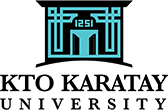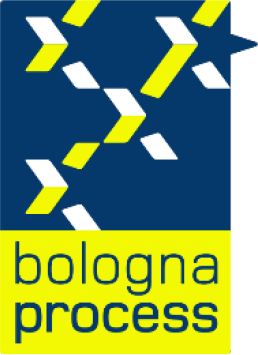Medical Imaging Techniques
Course Details

KTO KARATAY UNIVERSITY
Vocational School of Medical Services
Programme of Medical Imaging Techniques
Course Details
Vocational School of Medical Services
Programme of Medical Imaging Techniques
Course Details

| Course Code | Course Name | Year | Period | Semester | T+A+L | Credit | ECTS |
|---|---|---|---|---|---|---|---|
| 02910001 | Radiology Physics | 1 | Autumn | 1 | 3+0+0 | 5 | 5 |
| Course Type | Compulsory |
| Course Cycle | Associate (Short Cycle) (TQF-HE: Level 5 / QF-EHEA: Short Cycle / EQF-LLL: Level 5) |
| Course Language | Turkish |
| Methods and Techniques | - |
| Mode of Delivery | Face to Face |
| Prerequisites | - |
| Coordinator | - |
| Instructor(s) | Asst. Prof. Gamze EKİCİ |
| Instructor Assistant(s) | - |
Course Instructor(s)
| Name and Surname | Room | E-Mail Address | Internal | Meeting Hours |
|---|---|---|---|---|
| Asst. Prof. Gamze EKİCİ | B-131 | [email protected] | 7955 | Tuesday 14:00-16:00 |
Course Content
Course Content X-rays: the presence, the source, the tube, the conditions, characteristics, quality, quantity necessary for the ceremony. X-ray interaction with matter. X-ray detection, dosing. Radioactivity and Radium. Tools used to improve quality in radiography. Secondary radiation includes reduction of secondary radiation through the Grid, reduction of secondary radiation by changing primary light, and other methodological information.
Objectives of the Course
The main purpose of this course is to provide basic information about the structure, working principles and physics of medical imaging devices that students will use in their professional lives.
Contribution of the Course to Field Teaching
| Basic Vocational Courses | |
| Specialization / Field Courses | |
| Support Courses | X |
| Transferable Skills Courses | |
| Humanities, Communication and Management Skills Courses |
Relationships between Course Learning Outcomes and Program Outcomes
| Relationship Levels | ||||
| Lowest | Low | Medium | High | Highest |
| 1 | 2 | 3 | 4 | 5 |
| # | Program Learning Outcomes | Level |
|---|---|---|
| P1 | Has the knowledge to evaluate and apply shooting positions related to the field of medical imaging techniques, technical infrastructure and physics principles of imaging devices, radiation safety and radiation protection rules, pharmacological structures of contrast agents, side effects and risk factors, and uses applied knowledge. | 5 |
| P11 | Ability to express and make connections between at least two different courses outside the field that contribute to the individual's general culture. | 4 |
Course Learning Outcomes
| Upon the successful completion of this course, students will be able to: | |||
|---|---|---|---|
| No | Learning Outcomes | Outcome Relationship | Measurement Method ** |
| O1 | Ability to express the necessary theoretical knowledge in imaging processes in the field of medical imaging techniques. | P.1.1 | 1 |
| O2 | Ability to understand the application requirements of imaging processes in the field of medical imaging techniques by associating them with theoretical foundations. | P.1.2 | 1 |
| O3 | Ability to find the difference between different disciplines. | P.11.1 | 1 |
| O4 | Ability to interpret the concept of lifelong learning. | P.11.2 | 1 |
| O5 | Ability to explain issues related to lifelong learning. | P.11.5 | 1 |
| ** Written Exam: 1, Oral Exam: 2, Homework: 3, Lab./Exam: 4, Seminar/Presentation: 5, Term Paper: 6, Application: 7 | |||
Weekly Detailed Course Contents
| Week | Topics |
|---|---|
| 1 | Structure of Matter and Radiation |
| 2 | Structure of Matter and Radiation |
| 3 | Radiation Units and Radiation Damages |
| 4 | Radioactivity |
| 5 | Radioactive Decay |
| 6 | X-ray detection |
| 7 | X-ray quality, interaction with X-ray material, dose units |
| 8 | Midterm Exam |
| 9 | Secondary radiation, secondary radiation reduction methods |
| 10 | Photons and Electromagnetic Waves |
| 11 | Photoelectric Event and The Compton Incident |
| 12 | Bohr Model of Atom and Particle Wave Properties |
| 13 | Magnetic Resonance Imaging Techniques (MRI) |
| 14 | Development of MR devices, basic principles of MR |
| 15 | An overview |
| 16 | Final Exam |
Textbook or Material
| Resources | Martin E. J., 2013. Physics of Radiation and Radiation Protection, Translation Editor Tanır A.G., Bölükdemir M.H., Koç K., Palme Publishing.. |
| Martin E. J., 2013. Physics of Radiation and Radiation Protection, Translation Editor Tanır A.G., Bölükdemir M.H., Koç K., Palme Publishing.. |
Evaluation Method and Passing Criteria
| In-Term Studies | Quantity | Percentage |
|---|---|---|
| Attendance | - | - |
| Laboratory | - | - |
| Practice | - | - |
| Field Study | - | - |
| Course Specific Internship (If Any) | - | - |
| Homework | - | - |
| Presentation | - | - |
| Projects | - | - |
| Seminar | - | - |
| Quiz | - | - |
| Listening | - | - |
| Midterms | 1 | 40 (%) |
| Final Exam | 1 | 60 (%) |
| Total | 100 (%) | |
ECTS / Working Load Table
| Quantity | Duration | Total Work Load | |
|---|---|---|---|
| Course Week Number and Time | 14 | 3 | 42 |
| Out-of-Class Study Time (Pre-study, Library, Reinforcement) | 14 | 4 | 56 |
| Midterms | 1 | 20 | 20 |
| Quiz | 0 | 0 | 0 |
| Homework | 0 | 0 | 0 |
| Practice | 0 | 0 | 0 |
| Laboratory | 0 | 0 | 0 |
| Project | 0 | 0 | 0 |
| Workshop | 0 | 0 | 0 |
| Presentation/Seminar Preparation | 0 | 0 | 0 |
| Fieldwork | 0 | 0 | 0 |
| Final Exam | 1 | 20 | 20 |
| Other | 0 | 0 | 0 |
| Total Work Load: | 138 | ||
| Total Work Load / 30 | 4,60 | ||
| Course ECTS Credits: | 5 | ||
Course - Learning Outcomes Matrix
| Relationship Levels | ||||
| Lowest | Low | Medium | High | Highest |
| 1 | 2 | 3 | 4 | 5 |
| # | Learning Outcomes | P1 | P11 |
|---|---|---|---|
| O1 | Ability to express the necessary theoretical knowledge in imaging processes in the field of medical imaging techniques. | 5 | 4 |
| O2 | Ability to understand the application requirements of imaging processes in the field of medical imaging techniques by associating them with theoretical foundations. | 5 | 4 |
| O3 | Ability to find the difference between different disciplines. | 5 | 4 |
| O4 | Ability to interpret the concept of lifelong learning. | 5 | 4 |
| O5 | Ability to explain issues related to lifelong learning. | 5 | 4 |
